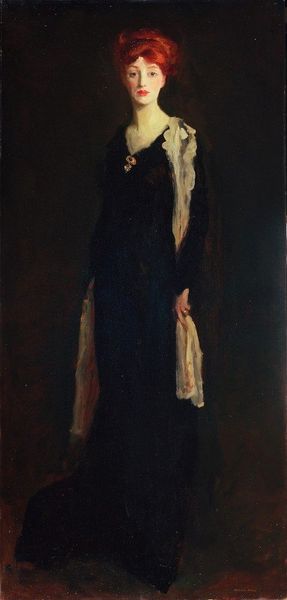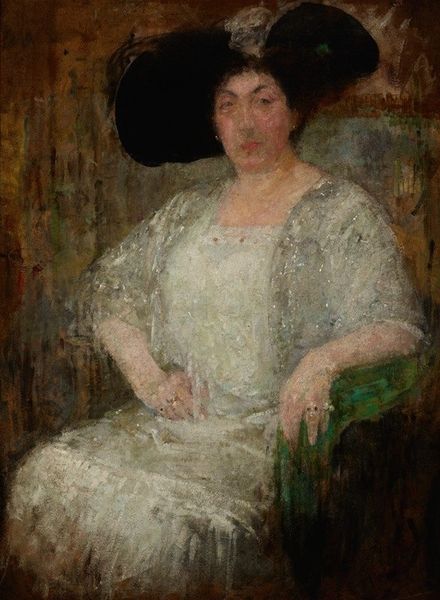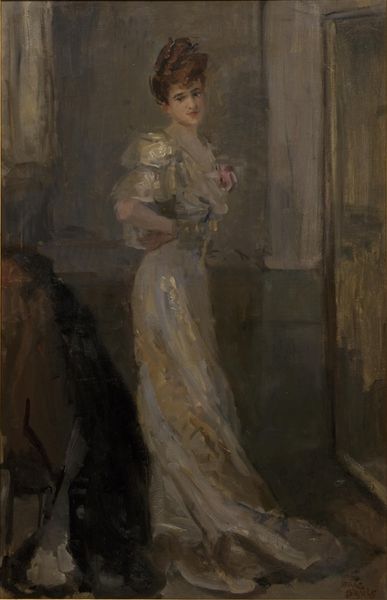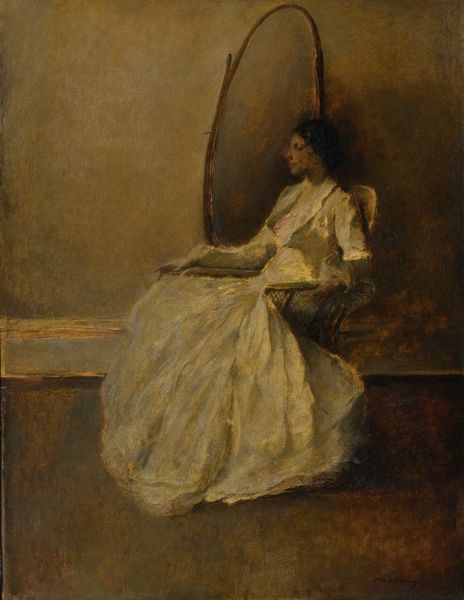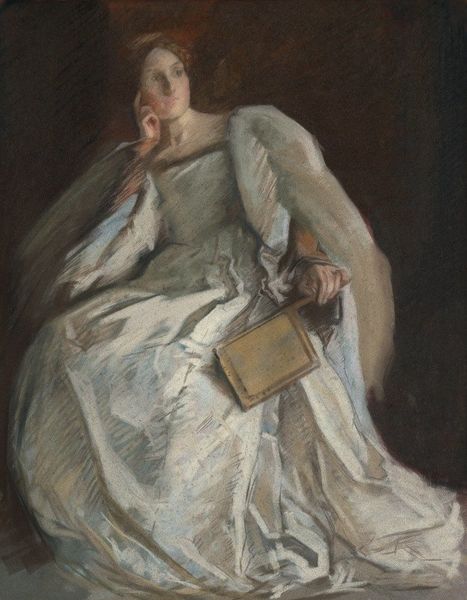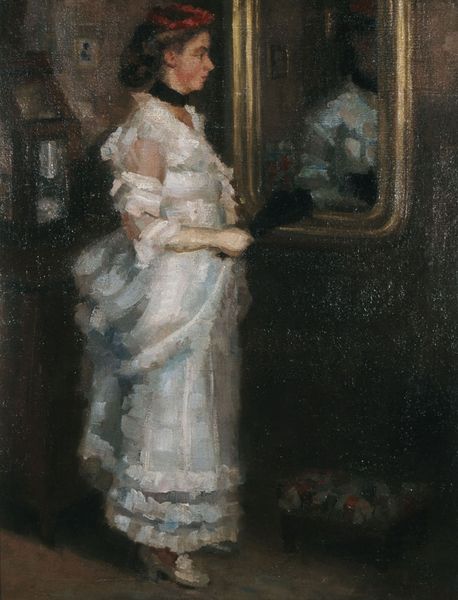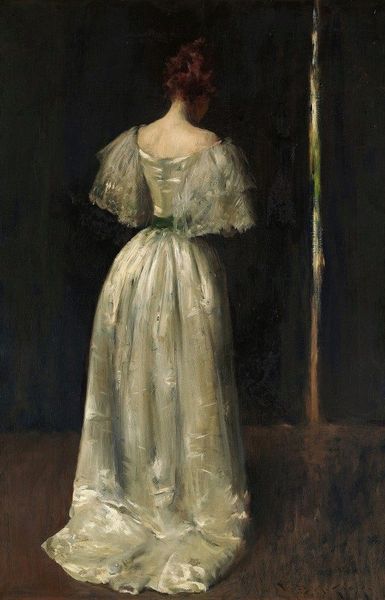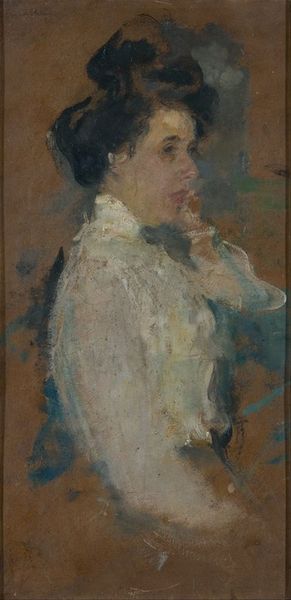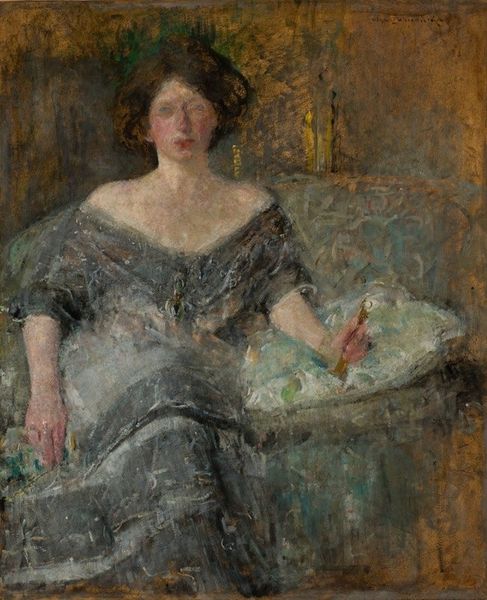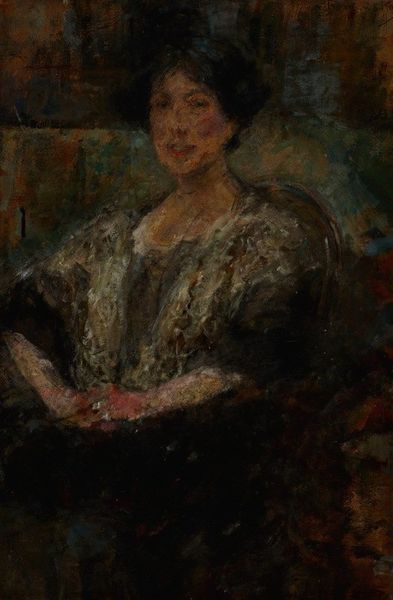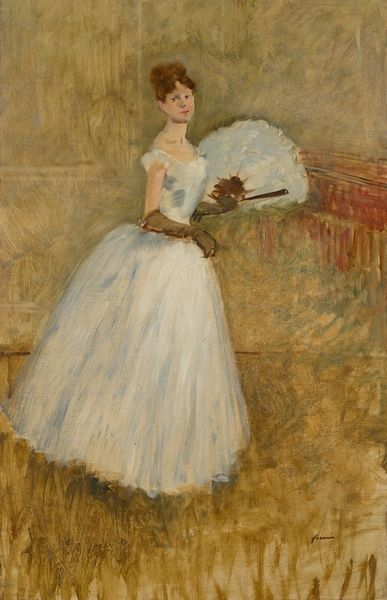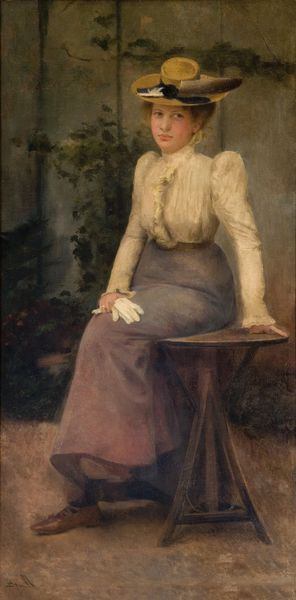
painting, oil-paint
#
portrait
#
figurative
#
painting
#
impressionism
#
oil-paint
#
painted
#
oil painting
#
symbolism
#
realism
Copyright: Public Domain: Artvee
Editor: This is James Ensor’s "The Lady with the Fan," painted in oil sometime between 1880 and 1881. The muted colors and diffuse light give it a very dreamlike, almost ghostly quality. What do you see when you look at this painting? Curator: Indeed. From a formalist perspective, one is immediately drawn to the interplay of light and shadow across the canvas. Notice how Ensor uses loose, gestural brushstrokes to construct form, particularly evident in the rendering of the woman’s dress and the background. Editor: So, the visible brushstrokes are important? Curator: Precisely. They reveal the process of creation, drawing attention to the materiality of the paint itself. Consider the composition, the placement of the figure in relation to the chair and the background. Does it feel balanced, or is there a sense of unease? Editor: I see what you mean, there’s definitely something unsettling about the negative space around her. It’s almost like she’s floating. Curator: That’s perceptive. Ensor masterfully uses color and light to create a dynamic tension. What do you make of the color palette, and how it contributes to the overall mood? Editor: It’s interesting you ask that. I almost overlooked it, but the restrained use of color, especially those pale greens and blues, really amplifies that feeling of otherworldliness, don't you think? Curator: A keen observation. It is through this meticulous orchestration of form, color, and light that Ensor transcends mere representation. It showcases emotion rather than reality, wouldn't you agree? Editor: Absolutely. Looking at the painting this way, it’s a completely different experience. Thank you. Curator: The pleasure was mine. Close analysis can reveal an entire narrative we had not anticipated.
Comments
No comments
Be the first to comment and join the conversation on the ultimate creative platform.
